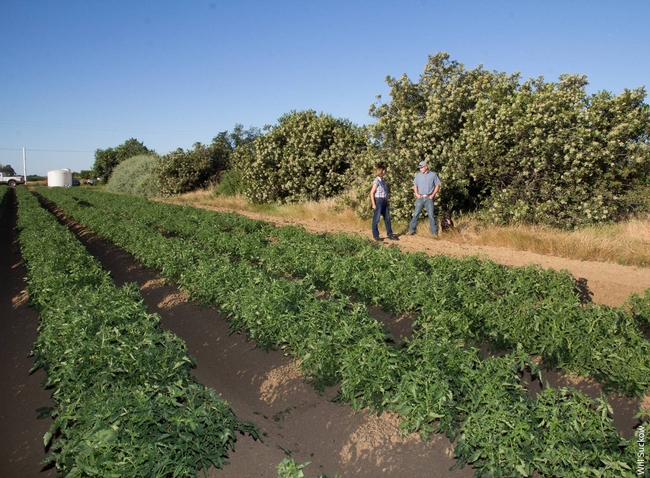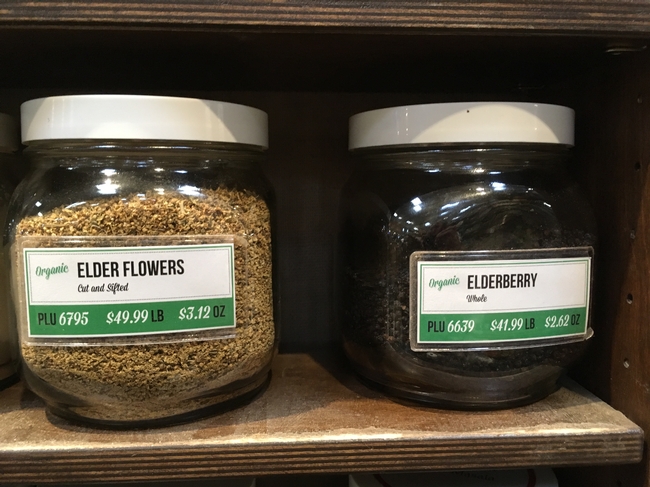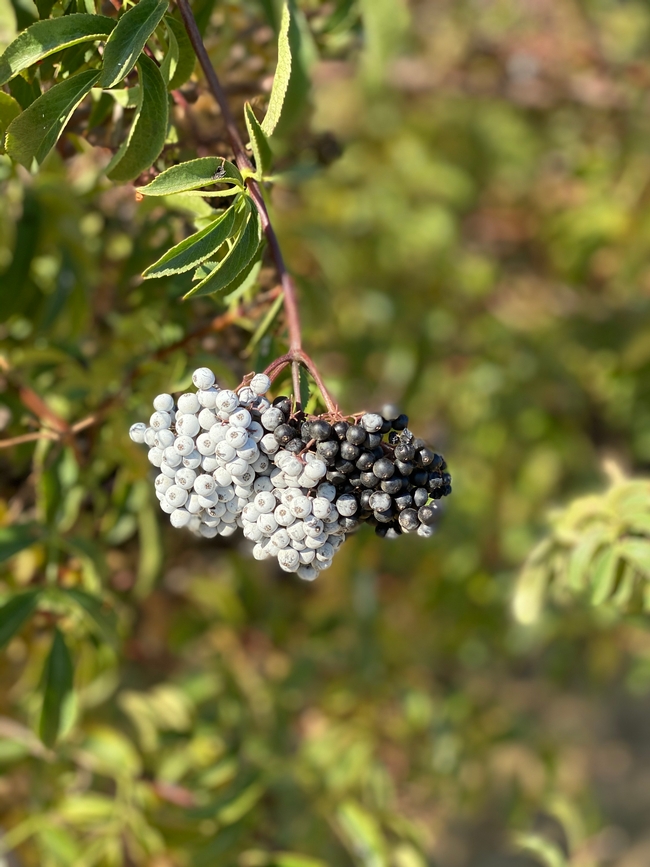Growing elderberries in hedgerows adds to farm income, benefits environment
As the sustainability of agriculture continues to be threatened by changes in climate, pests and loss of biodiversity, the ancient practice of planting hedgerows with edible and medicinal species such as elderberry can help growers generate additional revenue while fostering beneficial insects and improving soil health.
Most modern-day farmland is occupied by simple “monocrop” systems that often require frequent, energy-intensive inputs like synthetic fertilizers and pesticides to sustain their yields. These practices can be harmful to water quality, biodiversity and soil health.
But farmers who incorporate perennials into their farm landscapes can better harness living things—crop plants, pollinators, beneficial microbes and natural enemies of pests—to provide services rather than adding synthetic products, to the ultimate benefit of the farm and the environment.
Restoring field edges by planting hedgerows is a common way to add perennials to farm fields without taking land out of production. These managed rows of trees, shrubs, grasses and wildflowers were an ancient feature of agricultural landscapes throughout the world.
As farmland industrialized in Europe and North America in the 1900s, many old hedgerows were removed. But hedgerows have seen a resurgence in recent years as their significant environmental benefits—including natural pest control and pollination services, improved soil health and carbon sequestration—are increasingly recognized.
With hedgerows, “the whole farm can be a site of both conservation and profitability,” says Sonja Brodt, deputy director of the University of California Sustainable Agriculture Research & Education Program (UC SAREP).
Hedgerows can be costly to establish, and this is often the reason farmers choose not to use them. But incorporating a harvestable crop into a hedgerow can be profitable.
Brodt is leading a collaborative effort with California farmers and UC researchers to develop native western elderberry as a hedgerow cash crop. Blue elderberry (Sambucus nigra ssp. cerulea) is a native subspecies of elderberry that is well-adapted to Mediterranean climates and grows prolifically across California. It is thought to be more heat- and drought-tolerant than the more commercialized North American and European subspecies of elderberry.
“Elderberries have this great potential as a ‘win-win' crop. Farmers harvesting and selling elderberries from their hedgerows can receive a direct income from a farm practice that benefits the local ecosystem,” says Brodt.
Consumer demand for elderberry-based products has skyrocketed in recent years. Blue elderberry has similar antioxidant levels to blueberries and can be processed into products such as jams, syrups, tea mixtures and herbal supplements.
“We found that two-thirds of surveyed herbal and specialty foods processors and retailers were strongly interested in sourcing California-grown elderberries and couldn't find enough supply to meet their needs” says Gwenaël Engelskirchen of UC SAREP. Farmers who grow blue elderberry can tap into this growing market.
The research team recently completed a field trial in the southern Sacramento Valley to assess the profitability of blue elderberry. They found that elderberry yields from a 1,000-foot, multispecies hedgerow could provide $2,700 to $4,800 in revenue, after harvest and de-stemming costs, in only the second year after hedgerow planting. This revenue helps offset typical hedgerow establishment costs of $3,000 to $4,000, and elderberry revenue is expected to grow over time as the plant yields continue to increase. Value-added processing and specialty products made on-farm could also increase overall profitability.
While native elderberry hedgerows is a new area of research for the University of California, North America's indigenous people have been harvesting and tending blue elderberry in California for hundreds of years. Many Native persons across the state continue to gather, cultivate and use elderberry.
Sage LaPena, Nomtipom and Tunai Wintu ethnobotanist and certified medical herbalist, stresses that “elderberry is one of our most important traditional medicines and we've never stopped using it.” Cultivating elderberry for harvest could be one path towards increased food sovereignty for California's Native American tribes.
“There's an important lesson with this work,” said Brodt. “While new technologies are valuable for making agriculture more sustainable, we shouldn't lose sight of ancient practices that have benefited humanity and our landscapes over thousands of years. Hedgerows and other biological solutions are an essential piece of the sustainability puzzle. In addition, we have much to learn about the value of our native species from Native peoples and their traditional practices.”
To learn more about this research and to find educational resources for cultivating, processing, and marketing elderberry, visit https://ucanr.edu/sites/Elderberry.




I just love it.
Thank You!
Posted by Hridoy Kumar on October 28, 2020 at 9:47 AM